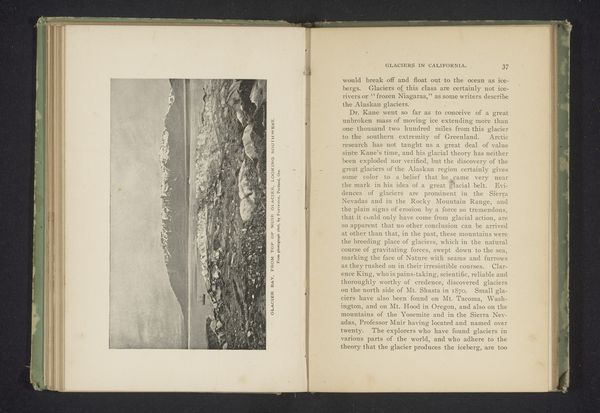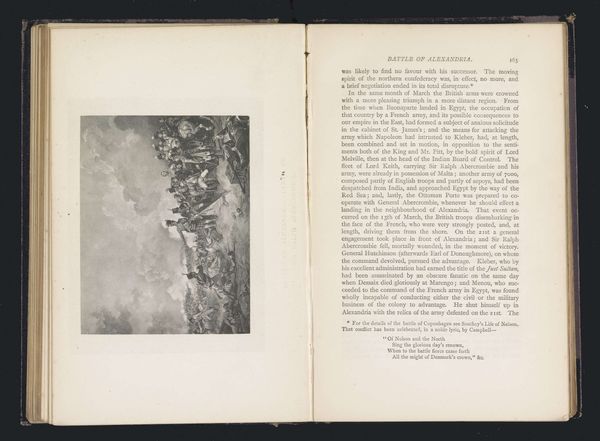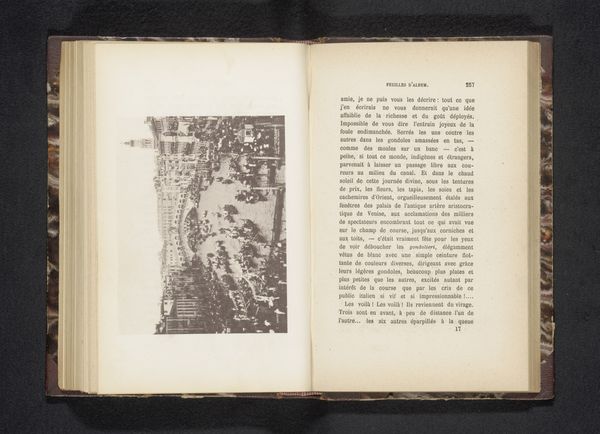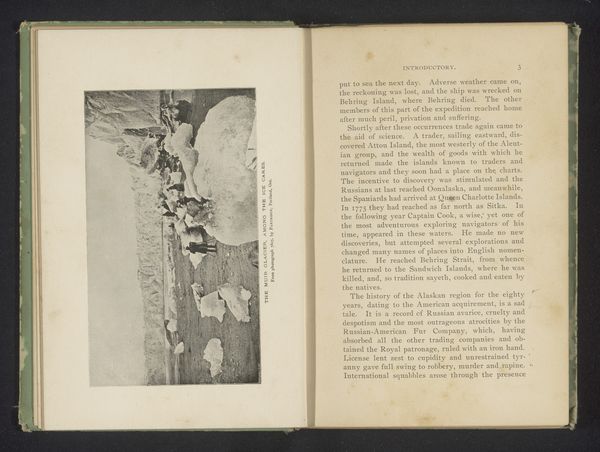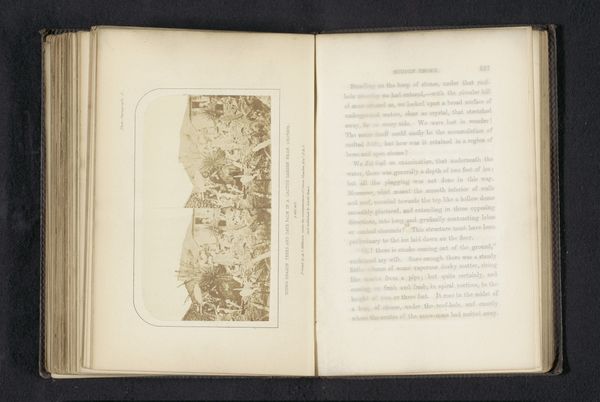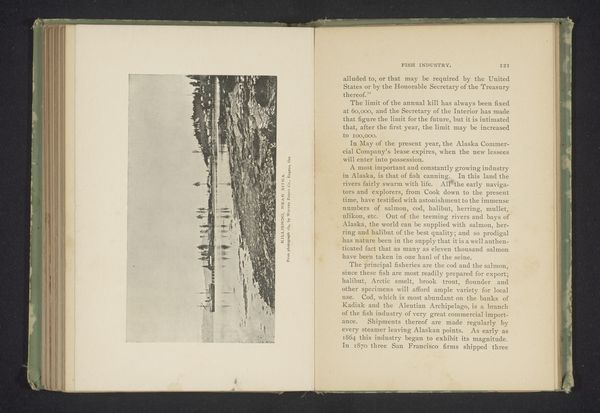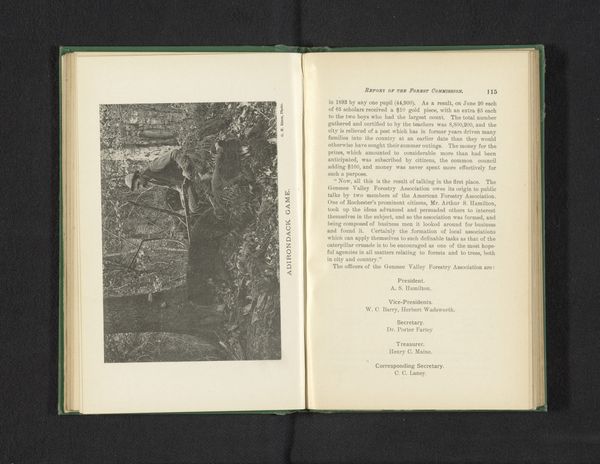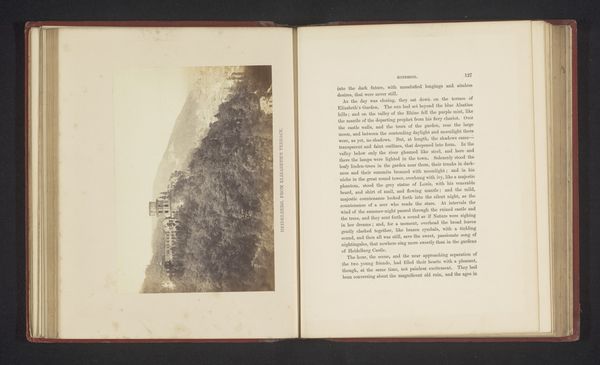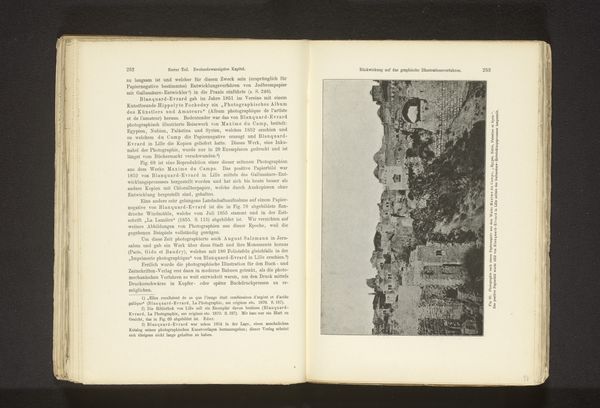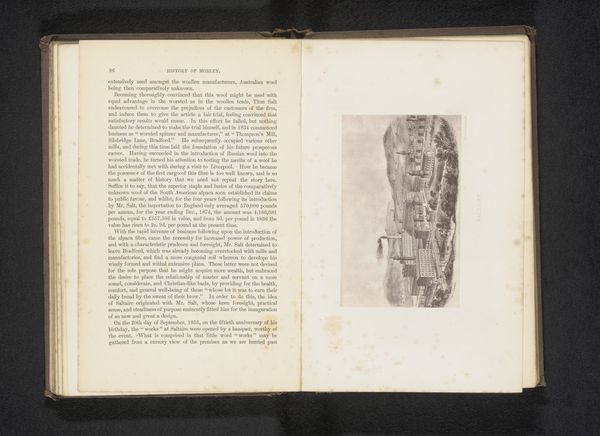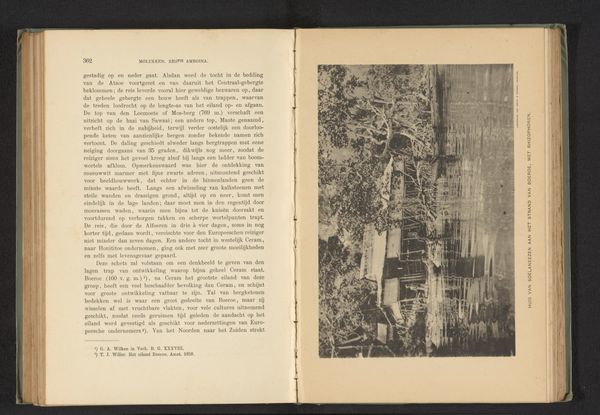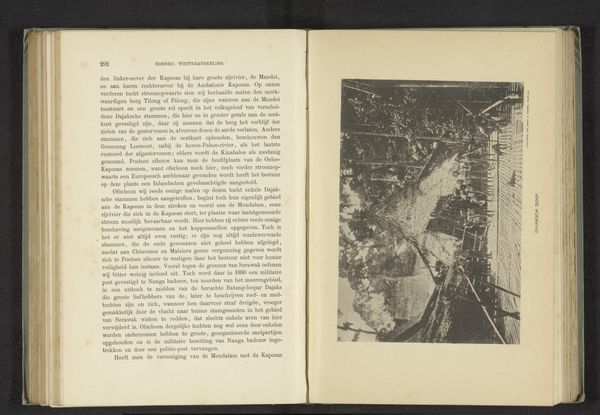
Groepsportret van Chief Kow-ee en andere Auke Tlingit-mannen na een berenjacht 1887
0:00
0:00
photography, gelatin-silver-print
#
portrait
#
photography
#
gelatin-silver-print
Dimensions: height 92 mm, width 162 mm
Copyright: Rijks Museum: Open Domain
Editor: This is "Groepsportret van Chief Kow-ee en andere Auke Tlingit-mannen na een berenjacht," or Group Portrait of Chief Kow-ee and other Auke Tlingit men after a bear hunt, created in 1887 by Winter Photo Co. It’s a gelatin-silver print. It's quite striking how formally posed they are after what I imagine would have been a difficult hunt. What stands out to you? Curator: What I see here is a very deliberate construction of identity for a Western audience. The Tlingit men are pictured after a successful hunt, something that resonates with Western notions of frontier life and masculinity. However, photographs like these were often used to create a particular narrative about Indigenous peoples - a narrative of conquest and assimilation. The men are named in the title and that's somewhat progressive for the period, but consider: who commissioned this image and for what purpose? Editor: That's a perspective I hadn't considered. I was focusing on the hunt itself and the skill it must have taken. Were these types of images used as a form of control? Curator: Precisely. Photography during this period was frequently deployed as a tool to document and categorize, almost a visual inventory of colonized populations. These images were then circulated, shaping public perception and justifying policies of assimilation. So, the hunt becomes less about the skill of these men and more about a symbol to a public, used as leverage for further political manipulation. Editor: So it’s like the image performs a function beyond simply documenting a moment in time? Curator: Exactly. It becomes a statement, a justification of a specific power dynamic. Think about where these photos ended up – in books, ethnographic displays, shaping ideas. It encourages us to question whose story is truly being told here, and how it's being framed. Editor: This really changes how I view not just this image, but portrait photography from that era. I'll definitely approach historical photos differently now. Curator: That's the key: considering the historical context and power structures at play when viewing these images. It reveals a deeper, more complex story than what's immediately visible.
Comments
No comments
Be the first to comment and join the conversation on the ultimate creative platform.
